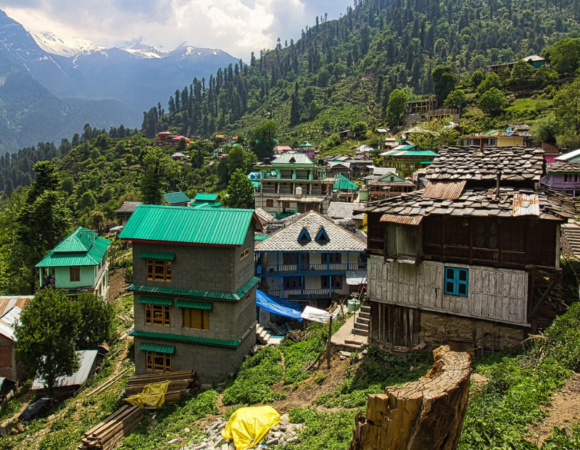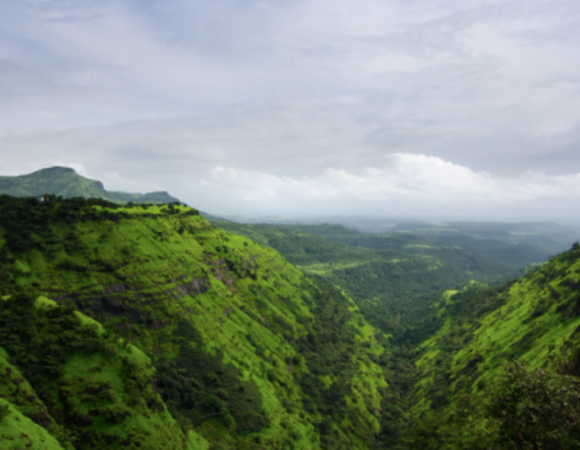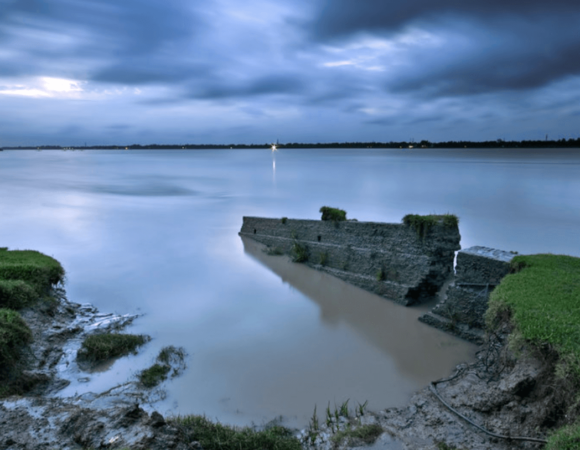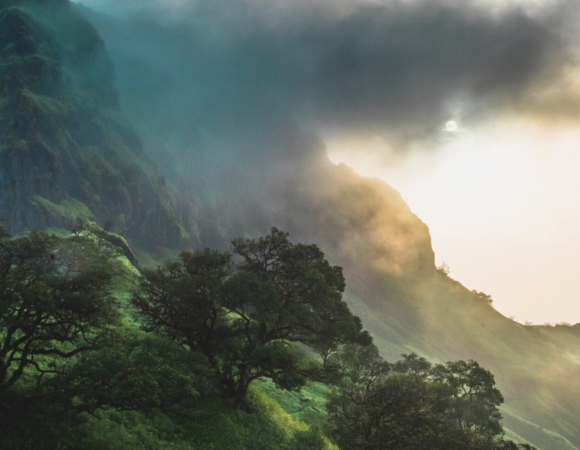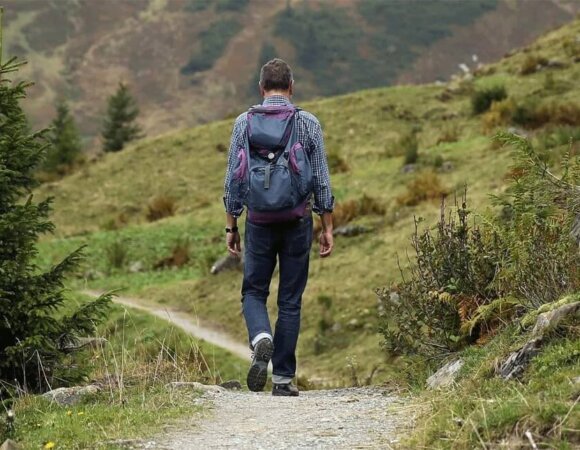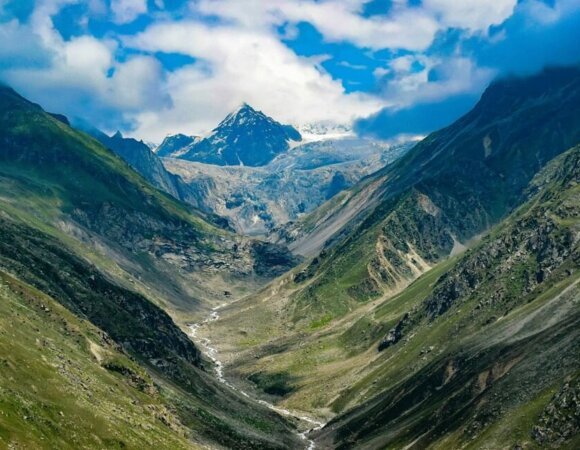Panch Kedar Trek Guide 2023: History, Highlights, Best Time, How to Reach and Itinerary
Table of Contents
ToggleNumerous temples devoted to various Hindu deities may be found across the state of Uttarakhand. Five such respected sanctuaries where Lord Shiva is worshipped may be found in the state’s Garhwal region. These temples are collectively known as Panch Kedar (panch in Hindi means “five”).
The five temples (Panch Kedar) assigned in the strict chain of importance to be followed for pilgrimage for worship are the Kedarnath Temple at an altitude of 3,583 m, the Tungnath Temple at 3,680 m, the Rudranath Temple at 3,559 m, the Madhyamaheshwar Temple or Madmaheshwar at 3,490m and the Kalpeshwar Temple at 2,200m.
The primary temple is the Kedarnath, which is one of the four Chota Char Dhams (meaning, “the little four abodes/seats”) or pilgrimage destinations in the Garhwal Himalayas; the other three dhams are Badrinath, Yamunotri, and Gangotri. Kedarnath is also considered one of the twelve Jyotirlingas. After Kedar – ‘the local name for Shiva’, the Garhwal region is also known as the Kedar-Khanda.
The Shaiva sect has many more symbols and iconic forms in the region than the Vaishnava cult. The western section of this area, which comprises half of Chamoli district is known as Kedar-Kshetra or Kedar mandala and has all five temples that comprise the Panch Kedar.
History of Panch Kedar Trek
The word Kedar refers to a natural geological formation or glacial bank. The Pandavas, the protagonists of the Hindu epic Mahabharata, are mentioned in the most renowned mythology concerning Panch Kedar.
In the legendary Kurukshetra battle, the Pandavas conquered and murdered their cousins, the Kauravas. They intended to atone for the sins of fratricide and the murder of Brahmins during the conflict. As a result, they handed over the reins of their country to their descendants and outlined in pursuit of the deity Shiva and his blessings.
But, because he was severely upset by the Mahabharata War, Shiva disguised himself as a Nandi and fled to the Garhwal area to avoid the Pandavas.While looking for Shiva, Pandavas noticed a bull grazing near Guptakashi. Bhima identified the bull as Shiva right away.
Bhima grabbed the bull by the tail and rear legs. However, the bull-formed Shiva vanished into the earth, only to emerge in pieces, with the hump raising in Kedarnath, the arms emerging in Tunganath, the nabhi and stomach appearing in Madhyamaheshwar, the face appearing in Rudranath, and the hair and head appearing in Kalpeshwar.
The Pandavas, overjoyed with Shiva’s return in five different forms, constructed temples in each of the five locations to honor and worship Shiva. As a result, the Pandavas were cleansed of their misdeeds.
| AREA | Garhwal Region, Uttarakhand. |
| DURATION | 13 days |
| BEST SEASON | May and October |
| GRADE | Moderate |
| ALTITUDE | 13,000 Ft |
| APPROX TREKKING KM | 130 Kms |

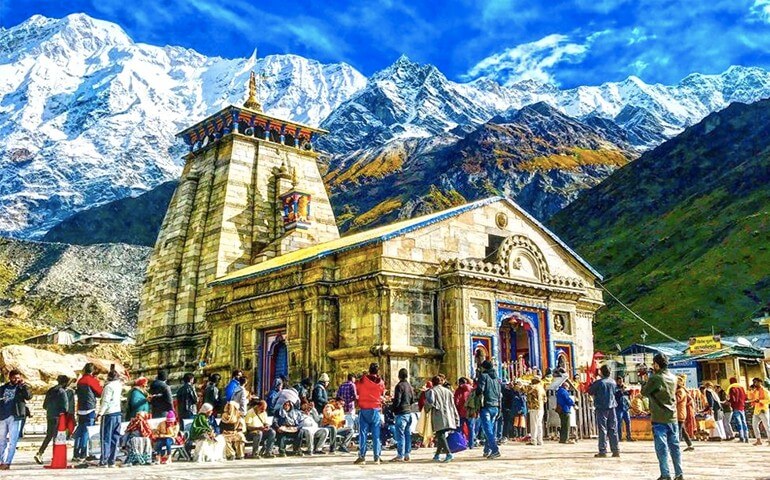



Highlights of Panch Kedar Trek
- Seeking Lord Shiva’s blessings in his five highest terrestrial abodes, Kalpeshwar, Rudranath, Tungnath, Kedarnath, and Madhya Maheshwar.
- Experience the splendor of the high-altitude grasslands of Rudranath, Panar, and Chopta.
- Observe the lovely countryside, which is embellished with blossoming flowers, dense woodland, and streams.
- Take advantage of the opportunity to immerse yourself in the rustic beauty of distant settlements.
- IInteract with their naive and industrious residents and learn how they live a joyful existence in the absence of appropriate technology.
- Enjoy camping beneath the stars amid stunning scenery.
Best Season to Visit Panch Kedar Trek
Panch Kedar Yatra is best done between May and October. All of Panch Kedar’s temples are only open for 6 months a year, from the end of April to the end of October. The temples are unreachable throughout the winter owing to heavy rain and snowfall.
In the winter, the sanctified symbolic of Lord Shiva in Kedarnath is worshipped in Ukhimath’s Omkareshwar temple, the symbolic idol of Tungnath is worshipped at Mokumath, the Rudranath symbolic image is carried to Gopeshwar, and the Madhyamaheshwar symbolic idol is cherished at Ukhimath. Only Kalpeshwar remains open all year.
Location of Panch Kedar Trek
The five temples are located in the Upper Himalayan areas, with snow-covered hill ranges of the Nanda Devi, Chaukhamba, Kedarnath, and Neelkanth peaks in the background.
Kedarnath lies in the Mandakini River valley, whereas the other temples are on the highlands between the Mandakini and Alaknanda rivers. All of the temples are in distant locations, and except Rudranath, the other four are still inaccessible by motorable roads.
The settlement of Kedarnath is located on the edge of the Kedarnath mountain slope in the remote northern Garhwal Himalayas. The streams that run in the valley behind the Kedarnath temple include the Dudhganga, Madhuganga, Swargaduari, and Saraswathi.
Urgam Valley has apple orchards, terraced fields where potato is grown extensively. Kalp Ganga River, a tributary of the Alaknanda, flows through this valley
How to Reach Panch Kedar Trek
By Air:-
Jolly Grant Airport serves Dehradun and is situated around 48 kilometers from Haridwar. There is a regular flight from Delhi to Dehradun; if arriving by flight, arrive one day early in Haridwar.
By Train:-
Haridwar is well-connected by train to other key cities like Delhi, Mussoorie, Mumbai, Varanasi, Lucknow, and Kolkata.
- DDN NZM AC EXPRESS departs from Delhi (2205)
- Doon Express departs from Kolkata (13009)
- From Mumbai, take the Dehradun Express (19019).
- From Chennai, take the Dehradun Express (19019). (12687)
By Bus:-
From Delhi ISBT Kashmere Gate, there is a frequent bus service to Haridwar.
From ISBT Kashmere Gate, try to ride only government buses. Private buses operate from outside ISBT and are untrustworthy.
Buses usually drop you off at the Haridwar bus station. You must then proceed to Haridwar Railway Station.
Itinerary of Panch Kedar Trek
Day 1 – Haridwar to Joshimath (Altitude: 6724 ft, 256 km drive, approx 10 hours)
Joshimath is the starting point for the spiritual Panch Kedar trek. Joshimath is a town in Uttarkashi that has recently become a tourist destination. Buses run frequently from Haridwar and Dehradun to Joshimath.
This long ride is breathtaking, with several tourist sights along the route. The most well-known is the confluence of the Alaknanda and Bhagirathi rivers, which subsequently merged to become the Ganga.
After the exhausting voyage, relax in a hotel room.
Day 2 – Joshimath to Kalpeshwar back to Urgam Village
You will first ride from Joshimath to Urgam village, which is 19 kilometers away. Urgam village is a serene environment at 2134 meters altitude. From here, you may begin your journey to Kalpeshwar.
So far, the altitude would be the same as Urgam village. Saints meditate at Urgam hamlet, which is noted for its tranquillity. Kalpeshwar revitalizes the entire landscape. You will gradually ascend through the different woodlands with animals grazing around you. The path is easy to follow and has plenty of rest stops. Villagers will greet you at every turn.
It will be a one-of-a-kind experience to eat lunch in such a basic setting. Enjoy your hike from now on, and make a stop at one of Urgam’s culturally rich homestays.
Day 3 – Urgam to Kalgot (2400m., 12 km. Trek)
Begin your next day with a nutritious breakfast and bright sunlight. Urgam is well-known for its potato and apple farms, and there are several large fields to be seen. Just don’t infringe on their property unless you have permission.
You will be pleasantly delighted to wander across the rich valley as you begin your day. The next destination is Kalgot, which is a 12-kilometer trek from Urgam but is not strenuous. It is a great secluded environment at a height of 2400 meters, with several waterfalls around it.
They are visible as you go through the deep woodlands.
You’ll notice that there will be miniature habitats that greet you now and then. This is your greatest chance to communicate with them and learn about their culture and location. Spend the night in a traditional Garhwali homestay.
Day 4 – Kalgot to Toli/Panar Bugyal (14 km. trek)
A fresh day awaits to be filled with new adventures. Today’s hike will be more difficult than yesterday’s. The track is 14 kilometers long, with the entire trip taking place under the shade of verdant trees. There will be plenty of farmland and rock trails and lovely pastures waiting for you.
The finest part about the walk is that, in addition to spiritual significance, each moment brings you closer to nature. It is the sensation of being in the wilderness.
On the fourth day, you will have a true adventure experience by sleeping in tents under the dark sky, surrounded by the refreshing wind of the woodlands.
Day 5 – Toli/Panar Bugyal to Rudranath and return (2286m., 8 km. trek Each Side)
Take a few deep breaths of fresh air as you wake up in your cozy tent accommodations. You will climb up to Rudranath today. With a height of 2286 meters, it is considered the most difficult among the four temples. However, the voyage will be life-changing.
The natural rock temple is encircled by lush rhododendrons and has rock-paved paths. The hike is 8 kilometers long and moderate. When you get to the Shiva temple, the first of the Panch Kedar, you will have your first true views of the highest Himalayan peaks such as Nanda Devi, Trishul, and others.
It will be time to return to Panar after some relaxing hours at the hallowed site. Have a good time in tents with joyful expressions.
Day 6 – Toli/Panar Bugyal to Sagar Village (14 km. Trek) and drive to Chopta (2900 m., 32 km.)
It’s time to go on to the second Kedar, Tungnath. To go to Tungnath, you must first climb 14 kilometers to Sagar village. Then you will cycle 32 kilometers to Chopta village.
The trip to Sagar village takes you through lush woods and various pastures.
The route to Chopta from Sagar habitat is a peaceful journey that gradually ascends. Because Chopta is a famous tourist location, it is congested.
It also serves as a camping area for the Chopta Chandrashila trek. It is a really pleasant place to unwind after a hard and exhausting day. Have a good time in your tent for the night.
Day 7 – Chopta to Tungnath(3680 m.) to Chandrashila and back to Chopta, (8 km. Trek)
Today will be an amazing day since you will be climbing to the world’s tallest Shiva temple. Tungnath temple is about 1000 years old and is located at a height of 3680 meters.
The path through the temple is made of concrete and is equipped with stairwells and grills for safety. The route to the top is fully decorated with rhododendrons, which change colors from red to pink to white as you gently ascend.
The walk is 3.5 kilometers long and generally takes 4-5 hours to complete. From afar, the temple may be seen standing in front of a cliff, surrounded by endless beauty. You may also climb up to Chandrashila, a well-known hiking destination.
This is the highest point to take a glimpse of the ocean of distant pinnacles. When you return to the base, you will sleep in a tent.
Day 8 – Chopta to Ransi (1765 m.,52 km. drive) and trek to Gaundhar (3073 m, 7 Km)
Another exciting day has passed, and it is time to proceed to the third Kedar. The excursion begins with a 52-kilometre drive from Chopta to Ransi through Kalimath. Then it’s a 7-kilometre hike to Gaundhar. The mud and scree path.
Gaundhar, at a height of 3073 metres, serves as the starting point for hikers attempting to climb Madhyamaheshwar. You will witness the sacred confluence of the rivers Ganga and Markanga. It is a breathtaking vantage point that should not be missed.
Have another enjoyable tent stay at the Gaundhar camp. Rest up for the impending Kedar the next morning.
Day 9 – Gaundhar to Madhyamaheshwar (3490 m., 10 km.)
This new day delivers the third of the five Kedars. The climb to Madhyamaheshwar temple takes 5-6 hours and covers a distance of 10 kilometres. The temple is located at 3490 metres in elevation and is a spectacular element buried among the alpine forests of the Garhwal mountains. The temple is nicely situated amid lush woodlands and lovely meadows.
The walking path is properly defined, so there is little risk of getting lost. When you get to the huge temple, you will be satisfied. Your night resting point is near the temple.
The camping area is breathtaking, with views of Kedarnath, Chaukhamba, and Neelkanth. Have your delicious meal and then retire to your tents.
Read more: Bhrigu Lake Trek
Day 10 – Madhaymaheshwar to Ransi (Trek down 17 Km) and drive to Guptkashi (1319 m, 35 Km drive)
We’re nearing the finish of the Panch Kedar yatra journey. Today we will travel 35 kilometres from Ransi to Guptkashi. Guptkashi features a temple devoted to Lord Shiva, similar to Vishwanath of Kashi, thus the name.
You will first retrace your route back to Ransi and then walk to Guptkashi. The trek is fantastic, with beautiful woodlands and a peaceful atmosphere. Following full meals, you will stay at motels.
Day 11 – Guptkashi to Gaurikund (15 km. drive) to trek to Kedarnath (3584 m., 16 km. Trek)
Kedarnath, and by far the most awaited destination, will eventually come to your favor. Kedarnath needs no explanation; it is one of the most frequented Char Dhams and a world-renowned pilgrimage destination.
Kedarnath implies opulence, heart-warming elegance surrounded by snow-capped peaks and massive glaciers. Every minute, you can see the rushing river running down the valley and hundreds of people wandering up and down.
You will stay overnight in the lap of the Himalayas, chanting OM and receiving Shiva’s blessing for a bright future.
Day 12 – Kedarnath to Gaurikund (16 km. Trek) and Gaurikund to Guptakashi (30 km. Drive)
The return route to home begins from Kedarnath, the last destination of the Panch Kedar trek. Get up early and prepare to see the exciting morning Pooja at Kedarnath temple.
Gaurikund will be your next attraction. The body of water is well–known for its hot springs. There is a well-known Parvati temple. From Gaurikund, you will travel to Guptkashi, where you will spend your final night in the highlands.
Day 13 – Guptkashi to Haridwar / Rishikesh / Dehradun
And the trip comes to an end here when you wake up on the final day of the Panch Kedar Yatra. Return home with a plethora of spiritual and exciting recollections.
Read more: Roopkund Trek
Frequently Asked Questions (FAQ’s) for Panch Kedar Trek
Which is the best time to go to Panch Kedar Trek?
May and October is the best month to go Panch Kedar trek. During this time all the five temples of the Panch Kedar yatra is accessible.
How long is the whole trek to Panch Kedar?
The whole trek to panch Kedar lasts for 13 days. Including the day you arrive at Haridwar and leave Haridwar, the Panch Kedar trek should be over by 15 days.
Where is Panch Kedar Trek located?
All of these Kedars are located in the western Uttarakhand or the Chamoli district.
What are the five temples of Panch Kedar Yatra?
Collectively known as Panch Kedar (panch in Hindi means five), these temples are Kedarnath, Madhmaheshwar, Tungnath, Rudranath, Kalpnath. Panch Kedar trek comprises all these five Kedars.
Which is the highest point in the Panch Kedar trek?
The highest altitude of the Panch Kedar trek is 1300 ft.
Which Panch Kedar temple has the toughest trek?
Rudranath Temple’s trek is the toughest among all five Panch Kedar.

